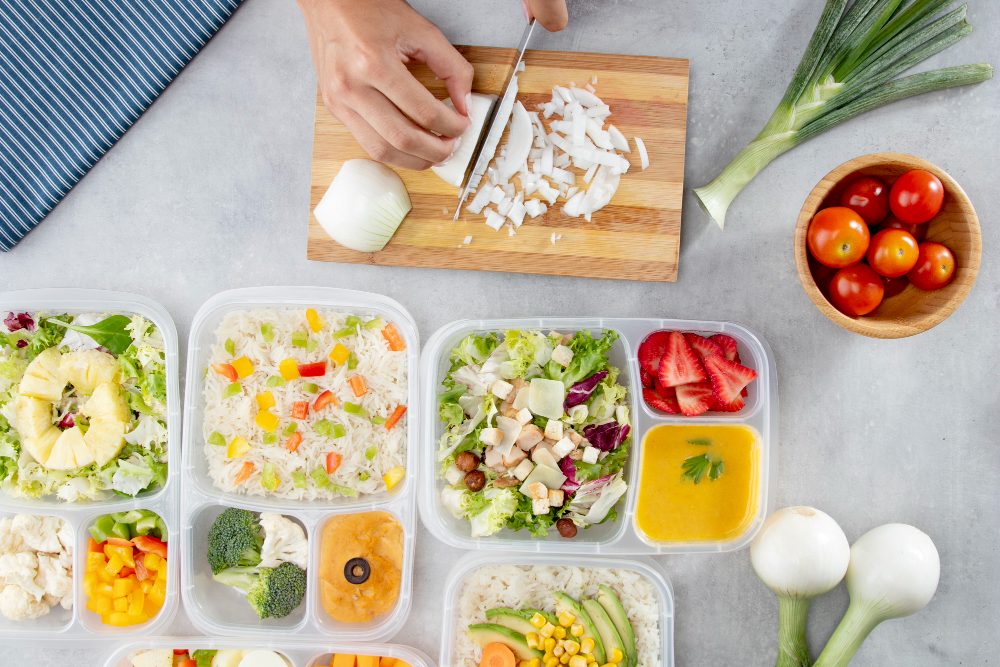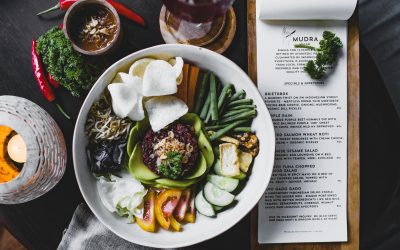Living a busy lifestyle can make it challenging to find the motivation to cook healthy meals at home. However, by learning some timesaving tips for cooking healthy meals, you can stay on track with your healthy eating goals and avoid unhealthy snacking, grabbing the quickest option from the fridge, or resorting to fast food.
Research indicates that maintaining a healthy weight is more difficult when you frequently dine out. Restaurant portions are often large and can contain an entire day’s worth of calories and sodium. With some planning, cooking at home can be enjoyable and manageable.
According to Mayo Clinic, menu planning is one of the most effective strategies for cooking healthy meals. Although it requires some initial effort, it saves significant time in the kitchen throughout the week.
Dedicate Sundays to planning and preparing meals for the upcoming week. This can also be a day to treat yourself to a dine-in or take-out dinner.
Even if you prefer to be spontaneous, you can still create balanced and healthy meals. Use the plate method to assess your meal by asking:
- Are three food groups represented?
- Are the portions appropriate?
Start with vegetables since they should make up the largest portion of your meal. If there aren’t any planned, add carrot or celery sticks, sliced tomatoes, or a spinach salad.
Here are some steps to make meal planning easier and more efficient:
Step 1: set aside time twice a week for food prep
- Chop and cook ingredients in advance for the next three to four days. Packs vegetables or meats in meal-sized portions for the fridge.
Step 2: embrace batch cooking
- Cook once for multiple meals. Some ideas include:
- Prepare a large batch of brown rice. Use some as a side dish one day, in a casserole the next, and in a stir fry the day after.
- Brown extra ground meat and divide it for casseroles, tacos, and salads. Refrigerate what you can use within three to four days and freeze the rest in recipe-ready portions.
- Cook extra-pasta and set aside some for a cold salad the next day.
- Make a big pot of homemade soup or chili and freeze it in smaller portions.
- Mix a double recipe of meatloaf and divide it in half. Bake one half as a meatloaf, roll the other half into meatballs, and freeze. You can also freeze leftover meatloaf slices for sandwiches.
- Cook chicken breasts or a roast in a slow cooker, and slice leftovers for sandwiches later. You can also freeze individual portions for a quick reheat later in the week.
Step 3: use overlapping ingredients
- Think of different meals that use similar ingredients and schedule them in the same week. For instance, a meal of brown rice, chicken, and sautéed vegetables one day can become chicken, rice, and veggie soup the next. The same basic ingredients can be used for veggie lasagna and veggie pizza. Prep all the veggies for a week’s worth of meals.
Step 4: rotate your menus
- Once you’ve planned a few weeks, start repeating the menus. You’ll learn what works and what doesn’t, allowing you to tweak your menus as needed.
Remember, the key to a balanced meal is including at least three of the five food groups: fruits, vegetables, grains, protein foods, and dairy. Aim to “eat the rainbow” by choosing a variety of colorful fruits and vegetables to reach the recommended five to nine servings per day.
Healthy meal planning doesn’t have to be complicated or time-consuming. Take a quick inventory of what’s in your pantry, refrigerator, and freezer. Then, based on those ingredients, create a plan and a weekly grocery shopping list to match.
By following these timesaving tips for cooking healthy meals, you can simplify your meal preparation and ensure you’re eating nutritious, balanced meals throughout the week.
If you want to know more about timesaving cooking ideas go to Mayo Clinic web site.
And if you want to read more about healthy food, go to our blog. Don’t forget that ReguFIT is a fiber supplement that help you to regularize your gut. Get it now and enjoy free shipping!










